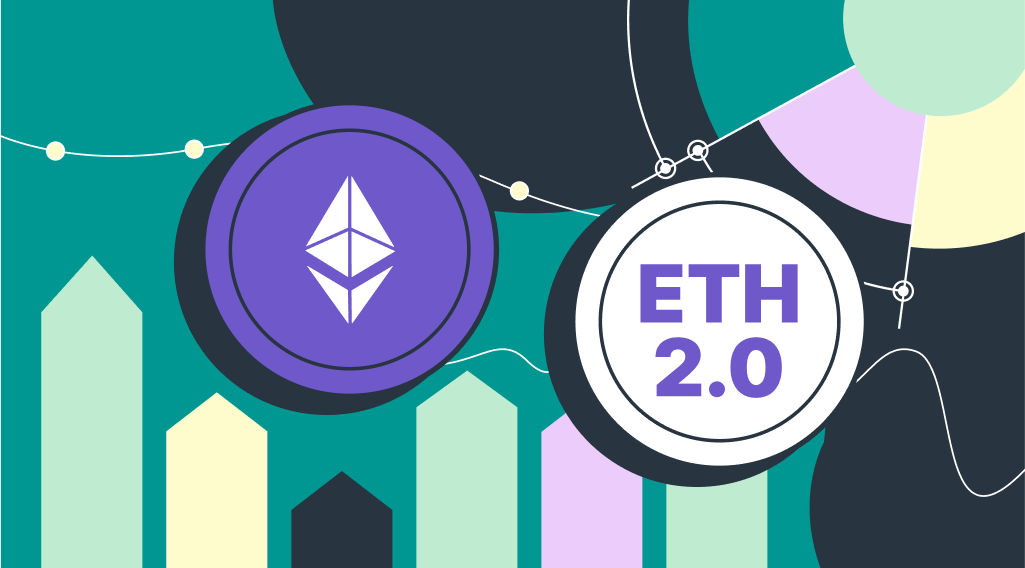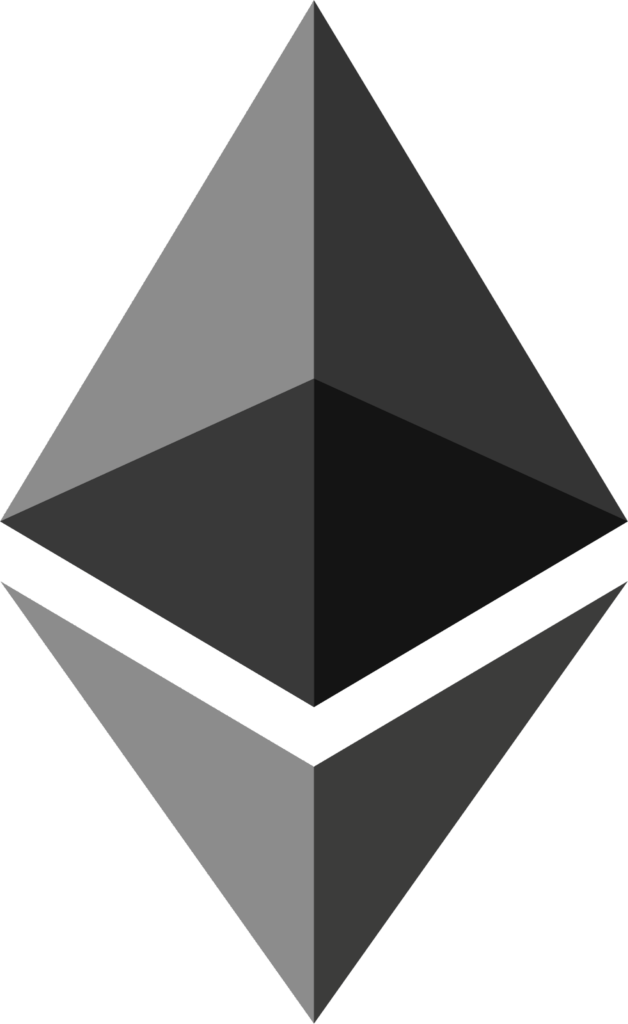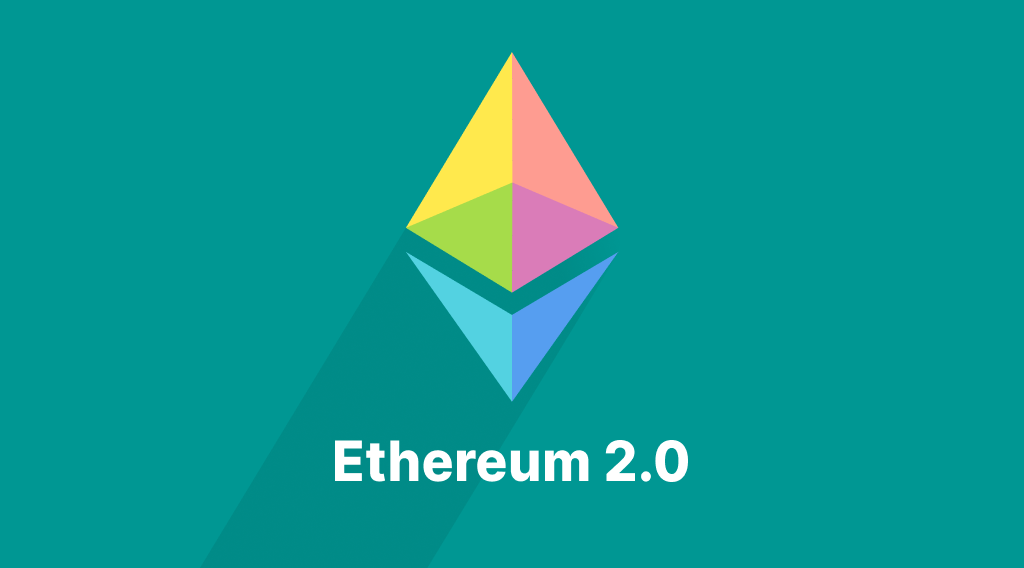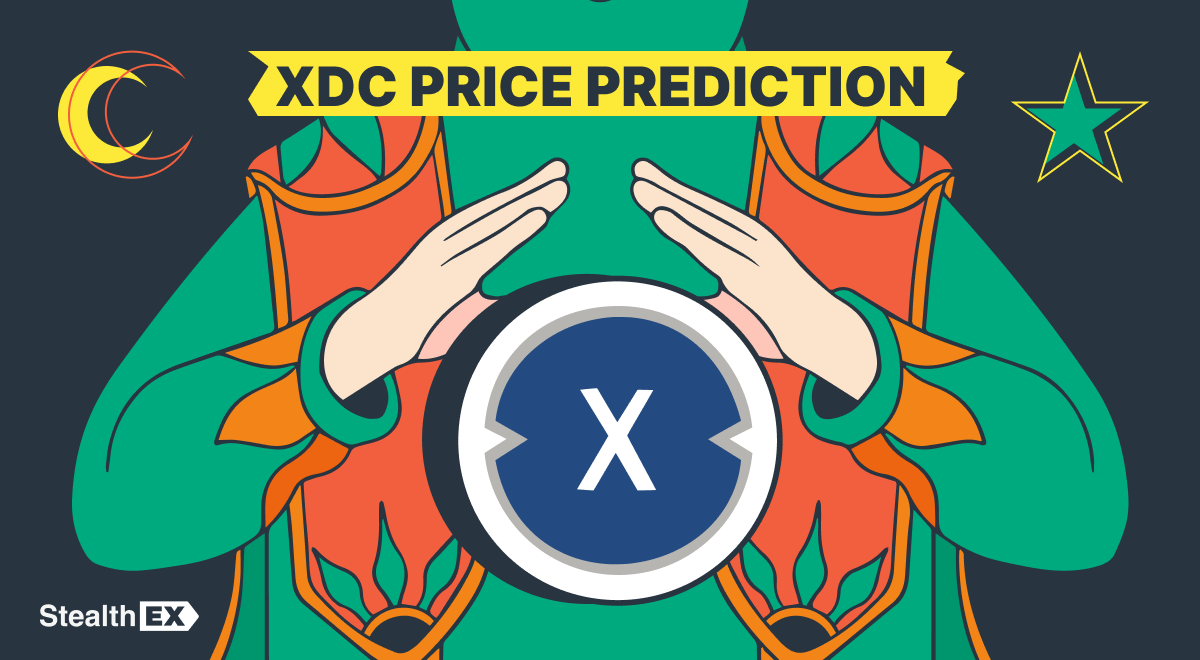Ethereum vs Ethereum 2.0 — What Are the Differences And Similarities?


The advent of Ethereum 2.0 has brought significant changes to decentralized finance and blockchain technology. This article explores Ethereum vs Ethereum 2.0 – the key differences and striking similarities between the original Ethereum and its upgraded version, ETH2.0. While both share the vision of creating a decentralized ecosystem, Ethereum 2.0’s shift to a proof-of-stake consensus and shard chains sets it apart from the original Ethereum’s proof-of-work model. Delving into their unique features and shared goals, we uncover how these two iterations of Ethereum are shaping the future of the digital assets world. But let’s start with a quick introduction to what Ethereum and 2.0 version are.
Article contents
- 1 What Is Ethereum?
- 2 What Is Ethereum 2.0?
- 3 Ethereum vs Ethereum 2.0 – Key Differences
- 4 Ethereum vs Ethereum 2.0 – Key Similarities
- 5 Ethereum vs Ethereum 2.0 – Comparison table
- 6 Summary
- 7 FAQ About Ethereum vs Ethereum 2.0
- 7.1 What Is Ethereum?
- 7.2 How Is Ethereum 2.0 Different from the Original Ethereum?
- 7.3 Why Was Ethereum 2.0 Introduced?
- 7.4 Is Ethereum 2.0 Faster than the Original Ethereum?
- 7.5 What Are Shard Chains in Ethereum 2.0?
- 7.6 How Does Proof of Stake in Ethereum 2.0 Differ from Proof of Work?
- 7.7 Is Ethereum 2.0 More Energy-Efficient than the Original Ethereum?
- 7.8 Can I Still Mine ETH After Ethereum 2.0?
What Is Ethereum?

Ethereum is a decentralized cryptocurrency platform that enables the creation and execution of smart contracts and decentralized applications (DApps). Launched in 2015 by Vitalik Buterin and a team of developers, it has become one of the most prominent cryptocurrencies in the market. Unlike traditional currencies, Ethereum operates on a blockchain, a distributed and immutable ledger that records all transactions and activities on the network.
Ether (ETH) is the native cryptocurrency of the Ethereum platform, serving as the fuel that powers transactions and computational operations within the network. Users can send and receive ETH and utilize it to pay transaction fees and interact with smart contracts and DApps.
The platform’s main feature is its support for smart contracts, which are self-executing contracts with the terms of the agreement directly written into code. These contracts run on the Ethereum Virtual Machine (EVM), providing developers with a flexible and decentralized environment to create various applications, from decentralized finance (DeFi) protocols to digital collectibles (NFTs) and more.
Ethereum’s open-source nature and robust developer community have led to a proliferation of diverse DApps and projects, driving innovation across multiple industries.
What Is Ethereum 2.0?
Ethereum 2.0, also known as Eth 2.0 or Serenity, is a major upgrade to the existing Ethereum blockchain designed to address the scalability and performance issues faced by the second-biggest blockchain. One of the primary problems Ethereum has been encountering is its limited transaction processing capacity, leading to congestion and high transaction fees during peak periods. The upgrade overcame this challenge by transitioning from the energy-intensive proof-of-work (PoW) consensus mechanism to a more efficient and sustainable proof-of-stake (PoS) system.
In a PoS model, validators are chosen to create new blocks and validate transactions based on the amount of cryptocurrency they hold and are willing to “stake” as collateral. This shift significantly increases the network’s throughput, allowing more transactions to be processed in a shorter time and reducing transaction fees.

Ethereum 2.0 also introduces the concept of shard chains, dividing the network into smaller, interconnected chains capable of processing transactions independently. This approach further enhances scalability by enabling parallel processing of transactions and smart contracts, thus reducing network congestion.
By addressing these critical issues by implementing PoS, shard chains, and other optimizations, Ethereum 2.0 aims to create a more scalable, secure, and sustainable ecosystem that can support a broader range of decentralized applications and enable mainstream adoption of blockchain technology.
Ethereum vs Ethereum 2.0 – Key Differences
Ethereum and Ethereum 2.0 are two iterations of the same blockchain platform, but they differ significantly in their underlying technology and capabilities. This section explores the key differences between the original Ethereum and its upgraded version, Ethereum 2.0.
Consensus Mechanism
Ethereum: The original Ethereum operated on a proof-of-work (PoW) consensus mechanism. PoW required miners to solve complex mathematical puzzles to validate transactions and create new blocks on the blockchain. While secure, this process is energy-intensive and can lead to network congestion during high transaction volumes.
Ethereum 2.0: To address the scalability and environmental concerns of PoW, Ethereum 2.0 transitioned to a proof-of-stake (PoS) consensus. PoS relies on validators who are chosen to create new blocks based on the amount of cryptocurrency they “stake” as collateral. This shift reduces the need for energy-intensive mining and enhances the network’s scalability and transaction processing capacity.
Choose StealthEX for Exchange and Buy Crypto
- User-Friendly — Simple and minimalistic interface for everyone.
- Fast and Private — Instant non-custodial cryptocurrency exchanges.
- Buy crypto with Credit Card.
- 1200+ coins and tokens are available for limitless, quick and easy exchanges.
- NO-KYC crypto exchanges — Buy cryptocurrency up to €700 without KYC!
- StealthEX crypto exchange app — Process crypto swaps at the best rates wherever you are.
- 24/7 Customer Support.
Earn from Each Exchange by Joining StealthEX Affiliate Program.
Become a partner right now and use affiliate tools:
- Public API — Earn from your wallet, aggregator, or exchange terminal.
- Referral Links — Recommend StealthEX to your audience.
- Exchange Widget — Built crypto exchange widget on any page of your website.
- Button — A perfect choice for traffic monetization.
- Banner — Track conversion and stats right in the personal cabinet.
Shard Chains and Scalability
Ethereum: The original Ethereum operated on a single blockchain, limiting its scalability as the network became increasingly congested during periods of high activity. This lead to higher transaction fees and slower confirmation times.
Ethereum 2.0: Ethereum 2.0 introduces the concept of shard chains. These shard chains divide the network into smaller, interconnected chains capable of processing transactions and executing smart contracts independently. By enabling parallel processing, Ethereum 2.0 significantly increases the network’s capacity and scalability, allowing more simultaneous transactions to occur.
Security and Sustainability
Ethereum: While the original Ethereum was secure, PoW systems are vulnerable to 51% attacks, where a malicious entity gains control over most of the network’s mining power.
Ethereum 2.0: The PoS consensus mechanism in Ethereum 2.0 increases security by making such attacks economically infeasible. Validators are incentivized to act honestly to maintain their staked assets, reducing the risk of malicious behavior and enhancing the network’s overall security. The shift to PoS also makes Ethereum 2.0 more energy-efficient and environmentally friendly.
Ethereum 2.0 represents a substantial upgrade from the original Ethereum, addressing critical scalability, security, and sustainability issues. Through the transition to PoS and the implementation of shard chains, Ethereum 2.0 aims to create a more robust and efficient blockchain ecosystem capable of supporting a broader range of decentralized applications.
Ethereum vs Ethereum 2.0 – Key Similarities
While Ethereum and Ethereum 2.0 differ significantly in their underlying technology and approach to consensus, they share several fundamental similarities that tie them together as part of the same blockchain ecosystem. This section explores the key similarities between the original Ethereum and its upgraded version, Ethereum 2.0.
Vision and Goals
Ethereum: Since its inception, Ethereum has been driven by the vision of creating a decentralized and open-source platform that empowers developers to build innovative applications and smart contracts on its blockchain.
Ethereum 2.0: The upgrade to Ethereum 2.0 upholds the same vision and goals as its predecessor. It aims to provide an improved infrastructure that continues to support decentralized applications and smart contracts while addressing the scalability and performance challenges faced by the original Ethereum.
Native Cryptocurrency – Ether (ETH)
Ethereum: Ether (ETH) is the native cryptocurrency of the original Ethereum network. It serves as the primary medium of exchange for transactions and a unit of value for various decentralized applications and services.
Ethereum 2.0: Despite the upgrade, Ethereum 2.0 retains Ether (ETH) as its native cryptocurrency. ETH continues to play a vital role in the new PoS network, used for staking, transaction fees, and various economic activities within the ecosystem.
EVM Compatibility
Ethereum: The original Ethereum operates on the Ethereum Virtual Machine (EVM), a runtime environment for executing smart contracts written in Ethereum’s programming languages, such as Solidity.
Ethereum 2.0: To ensure backward compatibility and seamless transition, Ethereum 2.0 maintains support for the EVM. This allows existing smart contracts and DApps running on the original Ethereum to be ported and executed on Ethereum 2.0’s PoS network with minimal modifications.
Decentralized Applications (DApps)
Ethereum: One of the primary use cases for Ethereum is the creation and deployment of decentralized applications (DApps). Developers leverage the platform’s smart contract capabilities to build various applications, including decentralized finance (DeFi) protocols, non-fungible tokens (NFTs), gaming platforms, and more.
Ethereum 2.0: With its continued support for smart contracts and EVM compatibility, Ethereum 2.0 remains an attractive platform for DApp development. Developers can continue building and expanding their applications on the upgraded network, benefiting from its enhanced scalability and security features.
Robust Developer Community
Ethereum: The Ethereum ecosystem boasts a vibrant and passionate community of developers, researchers, and enthusiasts who actively contribute to its growth and evolution.
Ethereum 2.0: The upgrade inherits and expands upon this community, drawing in new developers interested in the possibilities of Ethereum 2.0’s improved infrastructure. The collaborative spirit of the Ethereum community remains a driving force behind both iterations of the platform.
In summary, while Ethereum and Ethereum 2.0 showcase contrasting technical approaches, their shared vision, native cryptocurrency, EVM compatibility, support for DApps, and strong developer community bind them as essential components of the Ethereum ecosystem. These commonalities reflect a commitment to decentralization and innovation that underpins both platforms’ success and ongoing development.
Ethereum vs Ethereum 2.0 – Comparison table
| Aspect | Ethereum | Ethereum 2.0 |
| Consensus Mechanism | Proof-of-Work (PoW) | Proof-of-Stake (PoS) |
| Scalability | Limited due to single-chain architecture | Enhanced through shard chains and PoS |
| Transaction Throughput | Around 15-30 transactions per second (TPS) | Expected to scale to thousands of TPS |
| Environmental Impact | Energy-intensive mining (High carbon footprint) | Energy-efficient (Lower environmental impact) |
| Native Cryptocurrency | Ether (ETH) | Ether (ETH) |
| EVM Compatibility | Supported | Supported |
| Smart Contract Support | Supported | Supported |
| Backward Compatibility | N/A | Maintains backward compatibility with EVM |
| Security | Secure but vulnerable to 51% attacks | Enhanced security with PoS consensus mechanism |
Summary
In summary, Ethereum and Ethereum 2.0 differ in many aspects. Ethereum operates on a proof-of-work model and faces limitations in scalability, while Ethereum 2.0 utilizes a proof-of-stake model and implements shard chains to enhance scalability significantly. Despite these differences, both iterations support smart contracts, are agreeing with the Ethereum Virtual Machine (EVM), and are supported by active and engaged communities.
FAQ About Ethereum vs Ethereum 2.0
What Is Ethereum?
Ethereum is a decentralized, open-source blockchain platform that enables the creation of smart contracts and decentralized applications (DApps).
How Is Ethereum 2.0 Different from the Original Ethereum?
Ethereum 2.0, also known as Eth2 or Serenity, is an upgrade to the Ethereum blockchain. It aims to improve the scalability, security, and sustainability of the network by introducing mechanisms like Proof of Stake (PoS) and shard chains.
Why Was Ethereum 2.0 Introduced?
Ethereum 2.0 was introduced to address some of the scalability and energy consumption issues associated with the original Ethereum’s Proof of Work (PoW) consensus mechanism.
Is Ethereum 2.0 Faster than the Original Ethereum?
Ethereum 2.0 is expected to significantly increase the transaction throughput of the network due to its shard chains.
What Are Shard Chains in Ethereum 2.0?
Shard chains are individual chains that process transactions and smart contracts, running in parallel to alleviate congestion and increase the network’s capacity.
How Does Proof of Stake in Ethereum 2.0 Differ from Proof of Work?
Proof of Stake (PoS) is a consensus mechanism where validators are chosen to create new blocks based on the number of tokens they hold and are willing to “stake” or lock up as collateral. In contrast, Proof of Work (PoW) requires miners to solve complex mathematical problems to validate transactions and create new blocks.
Is Ethereum 2.0 More Energy-Efficient than the Original Ethereum?
Yes, one of the primary goals of Ethereum 2.0 and its PoS consensus mechanism is to be more energy-efficient compared to the PoW mechanism of the original Ethereum.
Can I Still Mine ETH After Ethereum 2.0?
No, with the full implementation of Ethereum 2.0 and its transition to Proof of Stake, traditional mining (as done in PoW) was phased out.
Follow us on Medium, Twitter, Telegram, YouTube, and Publish0x to stay updated about the latest news on StealthEX.io and the rest of the crypto world.
This article is not supposed to provide financial advice. Digital assets are risky. Be sure to do your own research and consult your financial advisor before investing.
ETH ETH 2.0 Ethereum Ethereum 2.0 Ethereum blockchainRecent Articles on Cryptocurrency
 XDC Price Prediction: Will XDC Crypto Reach $10?
XDC Price Prediction: Will XDC Crypto Reach $10?  OFFICIAL TRUMP Coin Price Prediction: How High Will TRUMP Coin Go?
OFFICIAL TRUMP Coin Price Prediction: How High Will TRUMP Coin Go? 